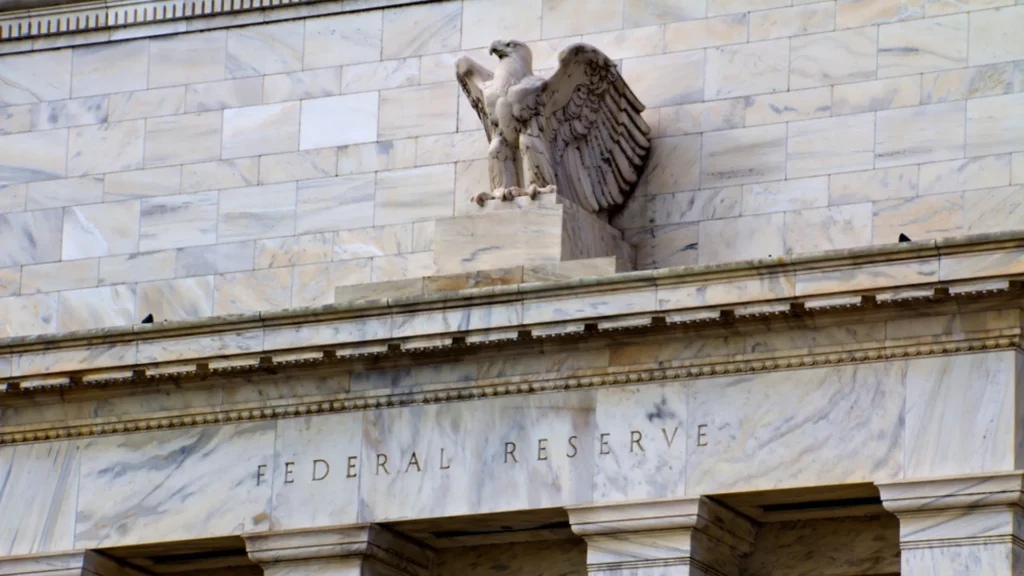The Fed’s policy decision sparked a quiet response from the presidential candidates despite being made just seven weeks before the US presidential election.
The Federal Reserve Chair Jerome Powell stated that the US central bank had a larger-than-usual half-percentage-point interest rate cut on Wednesday intended to demonstrate policymakers’ commitment to maintaining a low unemployment rate now that inflation has decreased.
This move marked the beginning of an anticipated series of rate cuts. Powell stated that the Fed has reduced its benchmark policy rate by 50 basis points to the range of 4.75%–5%, on a confidence that the country’s fight with high inflation was over.
It was evident that Powell, who has championed policy-by-consensus since becoming Fed chief in 2018, was motivated to start the Fed’s easing cycle, as evidenced by Michelle Bowman’s vote against the decision in favor of a lower quarter-percentage-point rate cut, which was the first dissent since 2005 from a Fed governor.
The central bank wanted to stay ahead and ward off any weakening in the job market, calling the move a “recalibration” to account for the sharp drop in inflation since the previous year. Analysts saw a nod to his goal to avoid trading higher unemployment to meet the central bank’s 2% target.
Diane Swonk, the chief economist at KPMG, says that a soft landing is possible and would cement his legacy as Fed Chairman. Fed policymakers also predicted that the benchmark interest rate would decline by half a percentage point by the end of this year, a full percentage point by the end of next year, and half a percentage point by the end of 2026, although they cautioned that the view into the future is uncertain.
This action creates a dramatic shift in the US monetary policy and the Fed’s increasing comfort level with inflation continuing to ease to its target. Currently, it is around half a percentage point above it.
The Fed’s policy decision sparked a quiet response from the presidential candidates despite being made just seven weeks before the US presidential election.
Vice President Kamala Harris states that the rate reduction is good news for Americans since many working and middle-class families would find prices too high.
Donald Trump, who elected Powel as the president of the Fed, says the extent of the drop signaled that the economy might be having problems.
Powell clarified, however, that the economy remained strong and that several labor market metrics, such as the 4.2% unemployment rate, were not concerning.
However, he acknowledged the concerns raised by economists and analysts about inflation that it takes time for monetary policy changes to take effect and that officials felt compelled to avert further labor market weakness due to the anecdotal evidence from businesses and slower hiring rates. Similarly to other arguments, quick action was necessary to preempt inflation.
Since ending an 18-month campaign of rate hikes last July, the Fed has maintained its policy rate between 5.25% and 5.50% to contain inflation, which rose to a 40-year high in 2022.
Powell said that while he did not declare victory, the labor market aligns with the central bank’s second objective of achieving maximum employment, and inflation is now close to the 2% target.
US stocks increased after the announcement of the statement and revised quarterly economic predictions before turning around and closing the day negative. While US Treasury yields increased, the value of the US was marginally stronger relative to a basket of currencies.
The policy rate will range between 4% to 4.25% by the end of this year, with rate futures traders moving to price in even more easing than the Fed had predicted.
The preferred measure of inflation used by the Fed is currently about 0.5 percentage points above the 2% mark.
According to recent economic projections, the annual rate increase in the price index for personal consumption expenditures will drop to 2.1% by the end of 2025 and 2.3% by the end of this year. The unemployment rate is estimated to close out this year at 4.4% and stay there until 2025. Like the last predictions, economic growth would be 2.1% through 2024 and 2% the following year.
